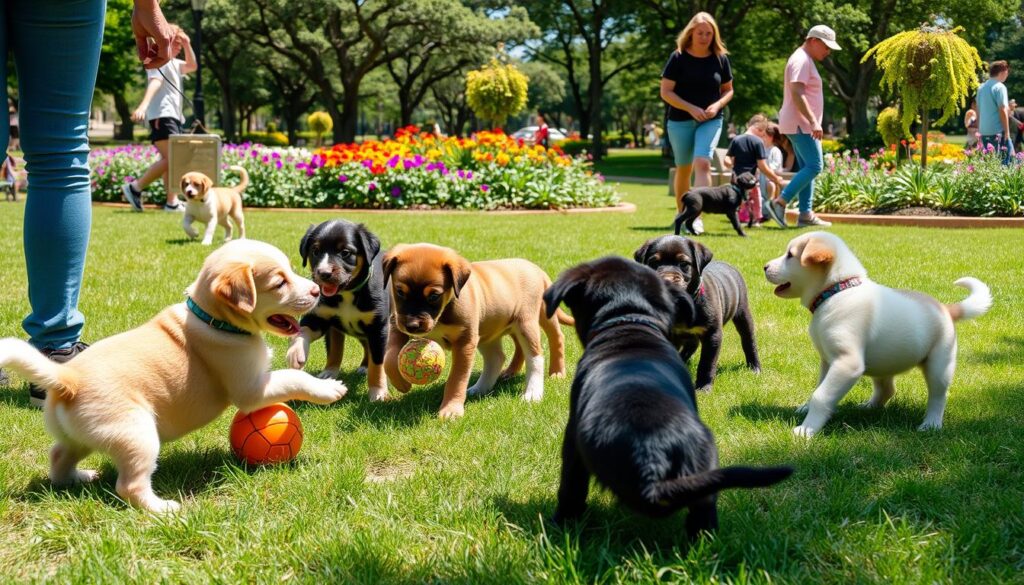Welcoming a puppy into your home is an exciting and heartwarming experience. Puppies bring joy, energy, and an abundance of cuteness to your life. However, with this excitement comes the responsibility of shaping your puppy into a well-behaved, confident, and emotionally balanced companion. The early years are critical for laying the foundation of good behavior, positive habits, and trust. At New Approach Canine, we understand the importance of starting training on the right foot, and our balanced training approach ensures that your puppy grows to become a happy, well-adjusted dog.
Here are some essential training tips and techniques for giving your puppy the best start in life.
1. Start Early: The Importance of Early Training
The earlier you introduce training to your puppy, the better. Puppies are like sponges during their developmental stages, soaking up experiences and learning quickly. Early training builds a strong foundation for good behavior and can even prevent common behavioral issues in adulthood. Start working on basic commands, routines, and house rules as soon as your puppy comes home.
- Why it matters: Puppies are most impressionable before the age of 16 weeks. Training during this time establishes good habits at a time when they’re most receptive to learning.
2. Establish a Routine
Puppies thrive on consistency, which is why creating a regular schedule is one of the best things you can do. Puppies need a predictable timeline for feeding, potty breaks, playtime, and sleep. A clear routine helps them feel secure and reduces confusion, making it easier to avoid common pitfalls like accidents in the house.
- House training tip: Take your puppy outside for potty breaks first thing in the morning, after meals, and before bed. Praise them immediately after they go in the correct spot to reinforce the behavior.
3. Build Trust with Balanced Training
At New Approach Canine, we use a balanced training method that emphasizes structure, clear communication, and consistency. Balanced training means using a combination of rewards for good behavior and appropriate corrections when necessary to help your puppy understand boundaries and expectations. This approach builds trust and respect while teaching your puppy to be emotionally resilient.
- Example in action: When teaching basic commands like “sit” or “stay,” use positive reinforcement (like praise or treats) for correct responses. For undesired behaviors, provide a firm but fair correction to help guide your puppy toward better behavior.
4. Introduce Basic Commands and Manners
Mastering basic commands during the early months helps your puppy become well-mannered and contributes to their overall emotional and physical safety. Start with simple commands like:
- Sit
- Stay
- Come
- Down
Teach one command at a time and make training sessions short and fun to keep your puppy engaged. Use positive reinforcement when they perform correctly and remain patient if they don’t get it right away.
- Pro tip: Practice these commands in various settings (indoors, outdoors, and with distractions) to strengthen their understanding.
5. Socialize Early and Often
Socialization is one of the most important aspects of raising a well-rounded dog. Early exposure to new people, environments, sounds, and other animals teaches your puppy to stay calm and confident in unfamiliar situations. Proper socialization reduces the risk of fear-based behaviors and aggression later in life.
- Ideas for socialization:
- Invite friends over to meet your puppy in a controlled setting.
- Expose your puppy to everyday noises like vacuums, cars, or doorbells.
- Arrange safe playdates with other vaccinated puppies or adult dogs with good temperaments.
Even though it’s important to socialize, avoid overwhelming your puppy. Take it slow and allow them to adjust to new experiences at their own pace.
6. Prevent Problem Behaviors Early
Many common behavioral issues—such as biting, jumping, chewing, or barking—can be addressed early with proactive training. Instead of waiting for these behaviors to become ingrained, tackle them right away using consistent guidance and redirection.
- Biting: Puppies often nip during play or teething. Redirect them to a chew toy and discourage biting human hands by saying “no” and ending playtime if necessary.
- Chewing: Puppies explore the world with their mouths, but this doesn’t mean furniture or shoes are fair game. Provide plenty of appropriate chew toys and keep tempting items out of reach.
- Jumping: Teach your puppy that calm behavior earns attention. Turn away or ignore them when they jump and reward them only when they greet you with all four paws on the ground.
By addressing these behaviors early, you’re setting clear boundaries and preventing frustration down the road.
7. Don’t Forget Crate Training
A crate can be one of the most useful tools in your puppy’s training journey. When used correctly, it serves as a safe and secure space for your puppy to rest and relax. Crate training aids with housebreaking, prevents destructive behavior when you’re not around, and helps your puppy adjust to being alone.
- Introduce the crate properly: Make the crate a positive space by adding a cozy blanket and treats. Gradually increase the time they spend inside to help them feel comfortable.
- Avoid using the crate as punishment: You want your puppy to view the crate as a safe haven, not a negative consequence.
8. Exercise Patience and Stay Consistent
Training a puppy is rewarding, but it can also be challenging at times. Puppies are full of energy, curiosity, and the occasional stubborn streak! Patience and consistency are key to helping them succeed. Stick to your training routine, even if progress seems slow. Every dog learns at their own pace, and setbacks are part of the process.
- Why consistency matters: When your puppy receives consistent guidance, they understand expectations and feel more secure.
9. Get Professional Help When Needed
Sometimes, puppy training can be overwhelming, especially if you’re dealing with behavioral challenges or just don’t know how to start. This is where professional trainers, like those at New Approach Canine, can help. We specialize in balanced training methods that meet the needs of every puppy and family. Our team can work with you to create a customized training plan that sets your puppy up for lifelong success.
10. Have Fun and Build Your Bond
Training isn’t just about teaching commands—it’s about building a strong, trusting relationship with your puppy. Celebrate the small wins, take breaks to play, and enjoy the journey of helping your puppy grow. A well-trained puppy isn’t just a well-behaved dog; they’re also a confident, happy companion who trusts and respects you.
Conclusion
The early years of a puppy’s life are the most important for shaping their behavior, personality, and emotional well-being. By starting early, creating structure, and using a balanced approach to training, you’re preparing your puppy for a lifetime of success. At New Approach Canine, we’re here to support you every step of the way, offering the tools and guidance you need to help your puppy become the best version of themselves.
Ready to set your puppy up for success? Contact New Approach Canine today to learn about our training programs, and let’s work together to help your puppy thrive!


